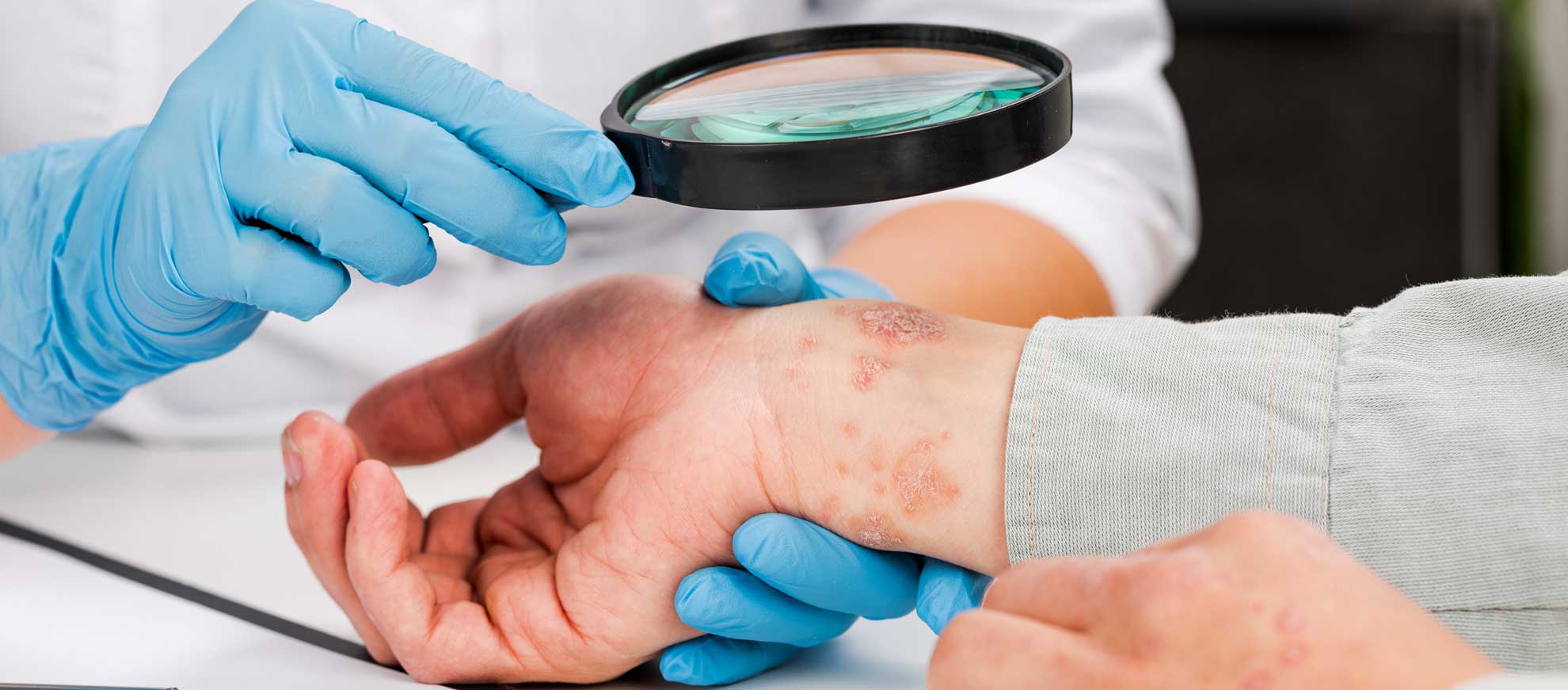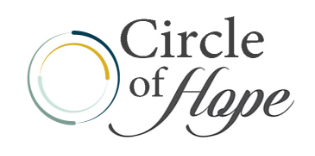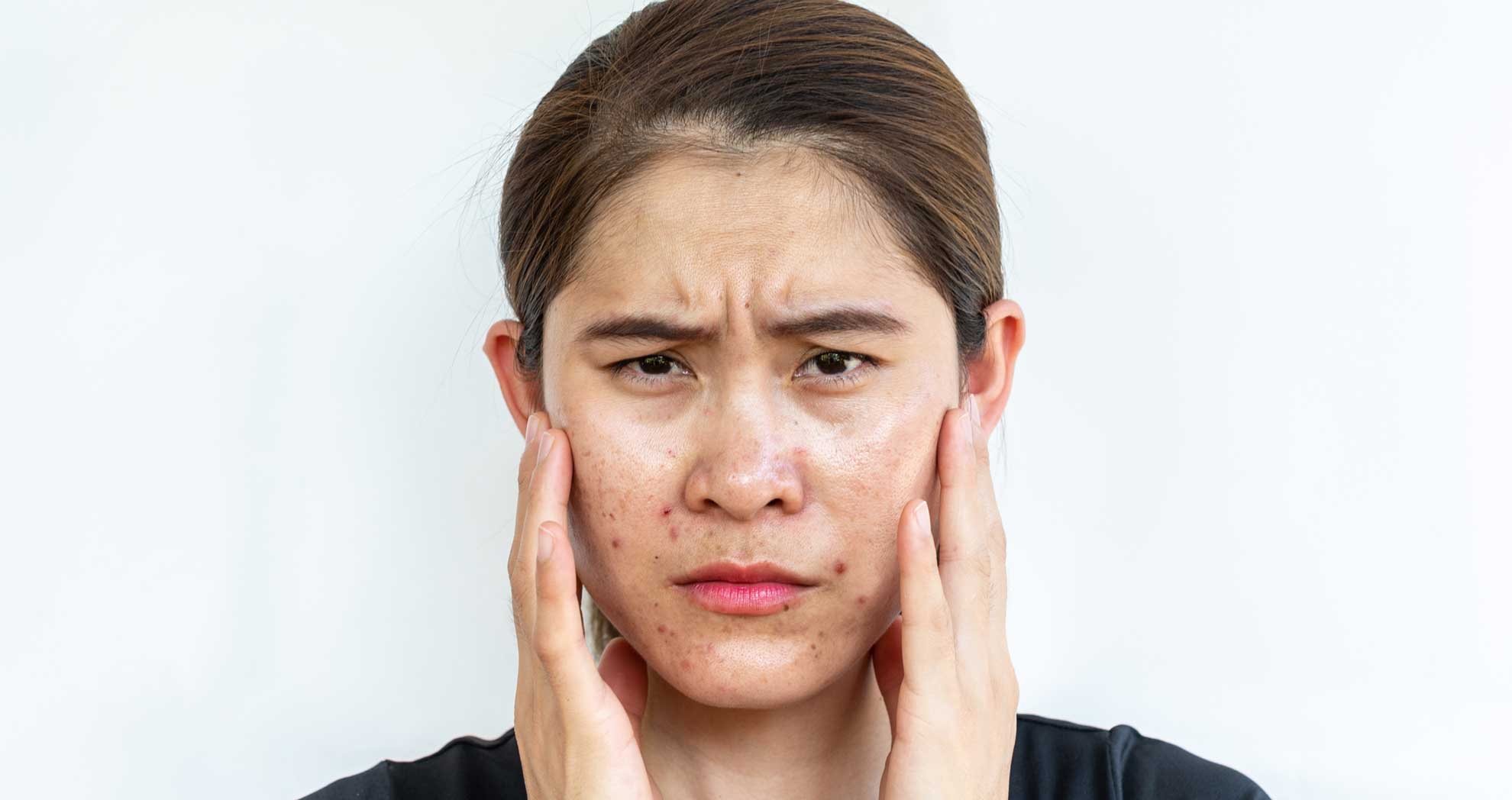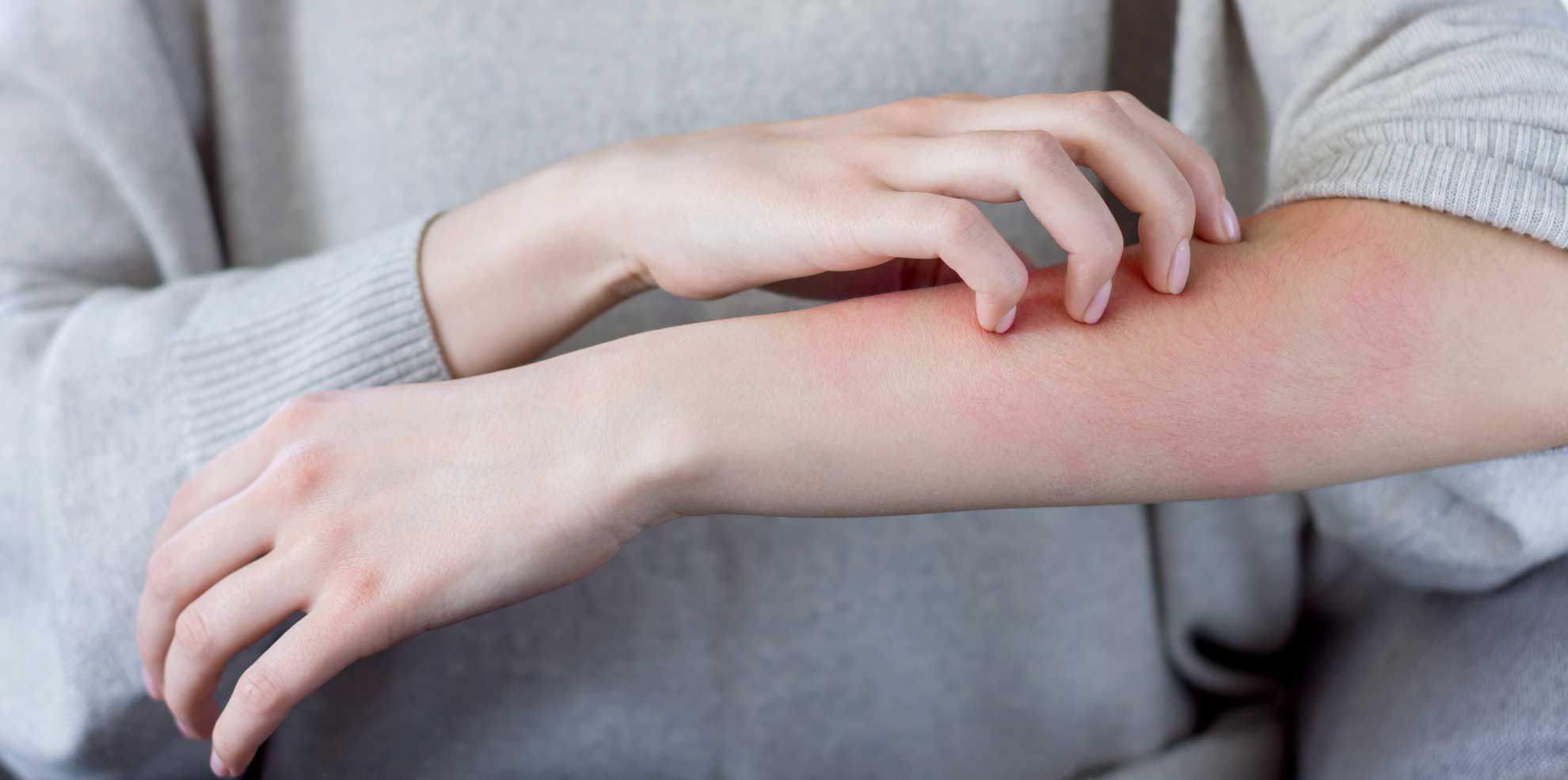
Meth sores are a typical side-effect of meth addiction. However, they can be caused by a variety of phenomena. In most cases, meth sores start off as self-inflicted wounds and eventually deteriorate into skin conditions. Someone who is regularly using meth may start showing up with meth sores more and more. However, someone suffering from meth dependence shouldn’t be shunned or scorned because of their appearance. Many times, they can’t help the situation they’re in. They need understanding and compassion to overcome this problem and face the issue of their addiction head-on. Treating meth sores starts with treating a person’s dependence on the substance.
Meth use has skyrocketed in the United States. According to SAMHSA, as much as 1.9 million people aged 12 or older were involved in meth use in 2017. This number has likely multiplied significantly in the light of recent events. One of the most significant fallouts of using methamphetamines is the physician and mental impact on an individual. Methamphetamine is responsible for people having vivid hallucinations, leading them to do things they usually wouldn’t do. Meth’s danger comes in how easy it is to make people addicted to it.
When someone starts taking meth, their brain produces large amounts of dopamine. However, because of how brain chemistry functions, a person will need to take more meth after that initial experience to get the same feeling. This situation is known as tolerance and changes the brain physically, adapting it to having meth in the body. This change leads to a condition known as dependency. When someone is dependent on meth, they can’t function properly without it. Sometimes, they will feel that nothing is going right in their lives because there’s no meth in their bodies. Dependency slips into addiction when a person starts making illogical decisions in their search for the substance. Addiction is a brain disease that preys on a person’s reliance to force them to seek out the drug, regardless of circumstances or consequences. Meth addiction leads to several psychological and physical symptoms that are immediately visible, making it difficult to hide their addiction. Because meth sores are such a recognizable part of addiction, it’s usually one of the first signs that friends and family recognize to point to a problem.
Meth And Psychosis
Psychosis sounds like a scary term, but it simply means something to do with a person’s mind. When someone is on meth, several things happen to their brain. Initially, there is a massive surge of dopamine, which creates this intense feeling of goodwill or euphoria. With time, however, meth leads to several other conditions that lead to a disconnect with reality. In some cases, people seek out meth for this reason. They feel like these hallucinations are part of the entire experience, and they look forward to them. Unfortunately, meth psychosis can have physical fallout. Because meth can cause such a significant and profound change in a person’s mental condition, understanding psychosis is necessary to formulating treatment to help these individuals.
Psychosis might be described as any episode that leaves a person disconnected from reality. One of the most common psychoses that individuals taking meth suffer from are delusions. When someone has delusions, they see things that aren’t there but respond to them as if they are. Delusions could be something harmless, like seeing someone that the person misses. However, meth’s delusions are more disjointed than this and usually refer to feelings. One of the most common delusions individuals on meth suffer from is the thought of insects crawling on their skin, which professionals refer to as “formication.” This feeling causes the person to scratch their arms as if the insects are inside them, leading to scarring.
Meth skin sores result from constriction in blood vessels close to the skin. When this happens, the skin gets scaly and starts to flake off. However, the skin isn’t the only place someone may have meth sores on their body. They are widespread and can occur in a person’s mouth or somewhere on their face as well. They could look like acne or like burns since some of them are side-effects of using drug paraphernalia. Mouth sores, in particular, usually result from using a pipe that’s too hot to smoke meth, leading to blisters on the lips and tongue. These sores can be disfiguring and immediately mark a person as a drug user, leading society to shun them.
Sores vs. Scabs vs. Meth Mites
Meth sores show up in various places, but they aren’t always raw and open wounds. When a person develops a meth sore, they might attempt to take care of it and even apply some slave to deal with it. However, as a person becomes more addicted, they lose their will to take care of their appearance, and the sores show up more prominently on their face, particularly their mouth. Meth affects the body’s ability to heal, and these sores eventually scab over, leading to meth scabs. Unfortunately, meth users pick at these scabs, reopening the wounds and keeping them from healing.
Sometimes meth sores are a direct result of a person scratching the itch produced by formication. As mentioned above, formication occurs when a person’s psychosis from meth makes them think that there are insects either on or inside their skin. Because of the itchy feeling this produces, a meth user might scratch at their skin, even tear it open to get these imagined insects out. These insects are termed meth mites but may also be called crank bugs. There are typically three ways that researchers believe the crank bug hallucination begins:
- Using meth can produce feelings of itchiness, leading to the user thinking there are mites under their skin.
- Meth users usually have poor hygiene and pick at the scabs on their skin or scratch at it, leaving sores that might play into these hallucinations.
- Sleep deprivation from meth use can typically lead to psychotic episodes where they imagine these insects under their skin. This situation is further heightened by tweaking.
Tweaking refers to a period following a meth episode where a person is still “coming down” from the high. When a person binges meth, they will try to extend that feeling for as long as possible, trying to stave off the onset of withdrawal symptoms. However, after a long period of use, the person’s brain no longer reacts to meth, forcing them to accept that their body needs to get off the drug. During this period, they got through a phase known as tweaking. Tweaking is the phase where most of the psychotic elements happen.
The Effect of Meth On The Skin
Meth has such a profound impact on a person’s physical appearance that it’s easy to spot a meth user in a crowd. Among the most common side-effects that meth use might have on a person’s skin include visible signs such as:
- Increased sweating
- Grayish, leathery texture to the skin
- Repetitive skin-picking
- Scabs or sores visible throughout the surface of the skin
Part of the reason meth has such a profound impact on a person’s skin is because of two significant events when a person starts taking meth regularly. Constant use of meth leads to a person’s skin becoming pale and losing its ability to heal from wounds. The results are apparent when this condition is combined with the continuous need for meth users to pick at their scabs and the fallout of itching from meth mites.
Meth Sores in The Mouth
The skin is not the only visible location for meth sores to show up. In many users, sores in the mouth are common as well. The term “meth mouth” refers to the burns and disfigurements that a person using meth might experience. However, it also refers to an additional symptom of meth addiction that many people recognize but don’t mention. Meth mouth refers to the state of decay of a person’s teeth once they start using the substance. Among the causes of meth mouth are:
- Dry mouth: When a person starts consuming meth, it dries out their saliva, which is crucial in preventing tooth decay. This lack of saliva leads to increased decay levels within their mouth.
- Grinding teeth or clenching jaws: As part of the psychosis that a person goes through while tweaking, grinding their teeth, or clenching and unclenching their jaws lead to added wear and tear on their teeth.
- Increased acidity: Meth is an acidic substance and can wear away or erode the enamel of teeth entirely, leading to severe tooth decay.
- Poor dental hygiene: Many meth users who have become addicted neglect their personal hygiene, such as brushing and flossing their teeth, speeding up tooth decay as a result.
- Bad dietary choices: Meth decreases appetite but increases a person’s craving for sugar. Extra sugar, combined with a lack of saliva in the mouth, is a disastrous combination, leading to enhanced tooth decay.
Ways To Treat Meth Sores
While it may seem easy to just leave the sores on their own to heal, this is easier said than done for a regular meth user. However, given time and a proper diet, the body will recover. Individuals who enter meth rehab see their meth scars heal over time, changing their appearance drastically. Unfortunately, things like tooth decay aren’t so easily fixed. Because tooth decay is irreversible, getting dentures made to replace the lost teeth may be necessary. In any case, meth sores can be treated just like regular sores once the underlying problem is addressed. However, if a person is still in the grip of methamphetamine addiction, it can be difficult to heal their meth sores.
Other Damaging Side Effects of Meth
As mentioned before, meth’s physical damage doesn’t stop at the skin. Meth mouth shows how badly teeth decay can set in for meth users. In addition to this problem, meth users will also find that they’re suffering from massive weight loss as a result. Many meth users have a skeletal appearance because of the levels to which the drug pushes their metabolism. Since they lose their appetite, they usually don’t eat while experiencing their meth episodes. Sugar intake increases, but this typically doesn’t provide enough calories for the body to remain functional, so it starts breaking down fat.
A more insidious and less obvious impact of meth consumption is its impact on cardiovascular health. When a person takes meth, they experience a rapid heart rate and occasionally have arrhythmia episodes. The faster heart rate usually leads to elevated blood pressure as well. Remaining in this state for an extended period leads to the heart muscle becoming enlarged, making it more difficult for the muscle to pump blood across the body. Additionally, research has shown that meth use can exacerbate existing cardiac issues such as atherosclerosis or cardiomyopathy, making it more likely to suffer from sudden cardiac death. These other dangers of meth shouldn’t be overlooked since they can significantly impact the quality of a person’s life.
Can You Overdose on Meth?
Meth overdose is expected, so much so that it’s the leading cause of overdose deaths in the US. Meth overdoses can be treated, but it’s often too late to get the victim some help before the unthinkable happens because of how overdoses take place. Many meth users do not do so in a supervised environment. If they overdose, there is usually no one around to help them or call an emergency number. Meth addiction creates a dangerous situation that may lead to a meth overdose. Because a person needs to consume more of the substance to get the same euphoric feelings, they may increase the dosage too much. Medical staff could save a person if they get to them in time, but every second counts.
Unfortunately, it’s easy to mistake meth overdose with a person simply being high on the substance. The symptoms of meth overdose mimic regular consumption. Some of the more telltale signs of overdose include an evident irregular heartbeat or labored breathing. There’s very little in terms of warning signs of a meth overdose, which is why it can be so deadly. Even if a person is observed while taking the drug, it can be difficult to spot when the overdose starts affecting them. Calling emergency personnel as soon as possible is the best approach to dealing with a potential meth overdose.
Medications For Meth Withdrawal
Meth withdrawal causes severe side effects. Detoxification, the first stage in quitting meth, is controlled meth of withdrawal, usually in the presence of medical staff who can help in case of an emergency. However, there are clinical approaches to methamphetamine withdrawal. In the past, meth withdrawal was managed without medication because none proved helpful in this context. Recent research may change that, as new data shows a combination of drugs might prove beneficial in helping individuals quit meth. While the doctors involved in the trial are very optimistic about the results, many are still skeptical about whether medication is enough to treat the condition.
The two drugs in question are naltrexone and oral bupropion. Naltrexone is well-known for treating opioid addiction, and bupropion is used to manage depression. Previous research into the combination of drugs for methamphetamine therapy reaches back to 2010, but it’s only now that there might be a solution. Even so, it’s important to remember that research is only the first stage of finding a solution. There is still not enough data to say whether this treatment will be available promptly. This situation means that we will have to depend on the professionals who are already treating methamphetamine addiction.
While it is possible to detox at home, it’s not recommended. Even without the support of medication, detoxing at home can be difficult. In a detox facility, medical staff can observe any severe changes in a person’s body and respond. A person is on their own at home, and if symptoms become too intense, they may have to call an ambulance. Unfortunately, many people who attempt to detox at home don’t make it because of their cravings towards the midpoint of withdrawal. These cravings can be difficult to ignore. A detox center helps with this problem by ensuring the patient is isolated from any drugs they can take. At home, this might not be the case, leading to relapse.
Considering Treatment for Meth Sores
Treatment for meth sores will be largely ineffective if a person remains addicted to the substance. Breaking their dependence on it is crucial to ensuring that those sores are cured and they can resume life as usual. Circle of Hope offers detox and rehab services to recovering persons. We seek to provide a safe, welcoming environment for each of our patients, giving them the support and care they need to overcome the struggle of their journey. If you’re ready to leave the world of dependency and addiction behind, give us a call today. We’d be glad to guide you on the road to recovery.


